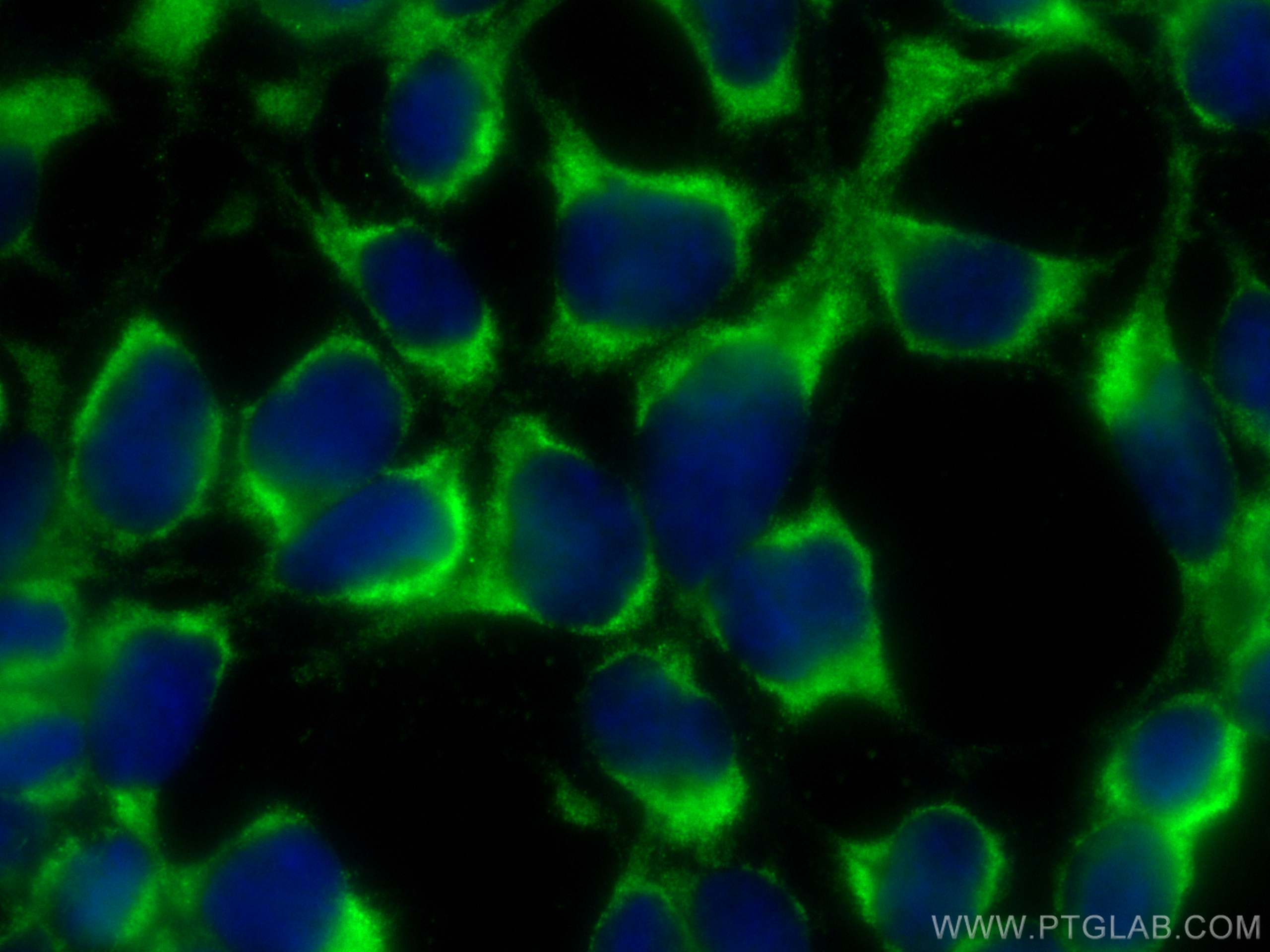Anticorps Monoclonal anti-PAK6
PAK6 Monoclonal Antibody for IF
Hôte / Isotype
Mouse / IgG1
Réactivité testée
Humain
Applications
IF
Conjugaison
CoraLite® Plus 488 Fluorescent Dye
CloneNo.
3G8C1
N° de cat : CL488-67562
Synonymes
Galerie de données de validation
Applications testées
| Résultats positifs en IF | cellules HEK-293, |
Dilution recommandée
| Application | Dilution |
|---|---|
| Immunofluorescence (IF) | IF : 1:50-1:500 |
| It is recommended that this reagent should be titrated in each testing system to obtain optimal results. | |
| Sample-dependent, check data in validation data gallery | |
Informations sur le produit
CL488-67562 cible PAK6 dans les applications de IF et montre une réactivité avec des échantillons Humain
| Réactivité | Humain |
| Hôte / Isotype | Mouse / IgG1 |
| Clonalité | Monoclonal |
| Type | Anticorps |
| Immunogène | PAK6 Protéine recombinante Ag27692 |
| Nom complet | p21 protein (Cdc42/Rac)-activated kinase 6 |
| Masse moléculaire calculée | 681 aa, 75 kDa |
| Poids moléculaire observé | 70-75 kDa |
| Numéro d’acquisition GenBank | BC035596 |
| Symbole du gène | PAK6 |
| Identification du gène (NCBI) | 56924 |
| Conjugaison | CoraLite® Plus 488 Fluorescent Dye |
| Excitation/Emission maxima wavelengths | 493 nm / 522 nm |
| Forme | Liquide |
| Méthode de purification | Purification par protéine G |
| Tampon de stockage | PBS avec glycérol à 50 %, Proclin300 à 0,05 % et BSA à 0,5 %, pH 7,3. |
| Conditions de stockage | Stocker à -20 °C. Éviter toute exposition à la lumière. Stable pendant un an après l'expédition. L'aliquotage n'est pas nécessaire pour le stockage à -20oC Les 20ul contiennent 0,1% de BSA. |
Informations générales
PAK6(p21-activated kinase 6) is a serine/threonine kinase belonging to the p21-activated kinase (PAK) family. .This protein plays a role in the regulation of gene transcription and may protect cells from apoptosis through phosphorylation of BAD. Northern blot analysis revealed that PAK6 is highly expressed in testis and prostate tissues (PMID:11278661).
Protocole
| Product Specific Protocols | |
|---|---|
| IF protocol for CL Plus 488 PAK6 antibody CL488-67562 | Download protocol |
| Standard Protocols | |
|---|---|
| Click here to view our Standard Protocols |


